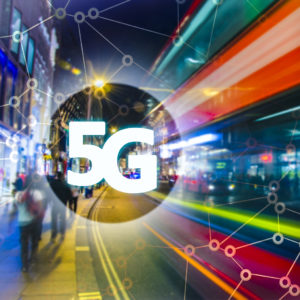As the economy screeches to a halt, the digital domain is more vibrant than ever and helping to keep Americans connected.
Internet providers are pouring billions of dollars into boosting digital services in response to the COVID-19 crisis and setting the stage for the next generation in connectivity with 5G wireless, which is being rolled out across America this year.
This new standard will be 100 times faster than 4G and pave the way for the internet of things and even remote medical procedures. Unfortunately, the Federal Communications Commission’s (FCC) recent decision to green-light the creation of a low-power, nationwide 5G network is coming under harsh scrutiny from Congress.
Lawmakers should let internet providers do their job and help bridge the digital divide during this difficult time.
On April 20, the FCC approved a plan proposed by provider Ligado to free up the “L-Band” of spectrum for 5G use. This critical bit of bandwidth, and in particular parts of the 1.5GHz and 1.6GHz channels, is ideal for cell towers processing large amounts of data capable of traversing long distances.
VentureBeat writer Jeremy Horwitz notes: “L-band channels could be used for both downloading and uploading data or dedicated just to uploading, a weakness in current 4G and 5G cellular systems. Anything calling for greater wireless upload speeds, such as sharing live videos from 5G drones or phones, could benefit, as could internet of things applications where upload speed isn’t as critical as the number of concurrent connections.”
Federal agencies led by the Department of Defense (DoD) aren’t keen on the L-Band being used to boost connectivity and narrow the digital divide.
Defense Secretary Mark Esper has claimed that, because the parts of the 1.5 and 1.6 GHz channels being used by Ligado are close to the slivers of spectrum used for Global Positioning System (GPS) applications, 5G could compromise location tracking.
Along with nearly a dozen other federal agencies such as the Department of Transportation (DoT), the DoD is on a mission to keep the L-Band away from internet providers and its most productive use.
The FCC’s strong technical guardrails attached to Ligado’s plan show that the fearmongering about GPS is completely unwarranted. The low-power network won’t encroach on GPS thanks to a 23-megahertz guard band that will separate the two applications.
In addition, signal power levels to be used for the Ligado network are 99.3 percent lower than previous versions of the proposed network (that were spurned by the FCC). Agencies such as DoD and DoT aren’t convinced by these safeguards and now have the help of lawmakers overly critical of the proposal.
The Senate Armed Services Committee will be holding a May 6 hearing (live and in-person, no less) where Pentagon officials will put their grumblings about the Ligado network on full, public display.
This tag-teaming of members of Congress and Pentagon officials comes across as excessive, especially since these GPS-related arguments have been frequently aired — and debunked — in the public arena. Agencies doggedly trying to hoard spectrum, however, is nothing new.
For example, the DoT was livid over the FCC’s plan to unshackle 45 megahertz of spectrum in the 5.9GHz band for Wi-Fi purposes. The agency remains convinced that the best use of this spectrum is auto safety technology, even though the much-hyped Dedicated Short-Range Communications (DSRC) services never really caught on.
Federal agencies have even claimed (without evidence) that 5G applications will get in the way of weather forecasting. Agency leaders and their congressional allies need to understand the pressing needs of the digital domain and allow private providers their day in the sun.
The stakes cannot be higher as digital demand skyrockets and America stands at the cusp of nationwide 5G networks that will continue to close the digital divide.
It’s time to let Ligado and other companies build fast, resilient networks that keep the internet — and America by extension — up and running.

